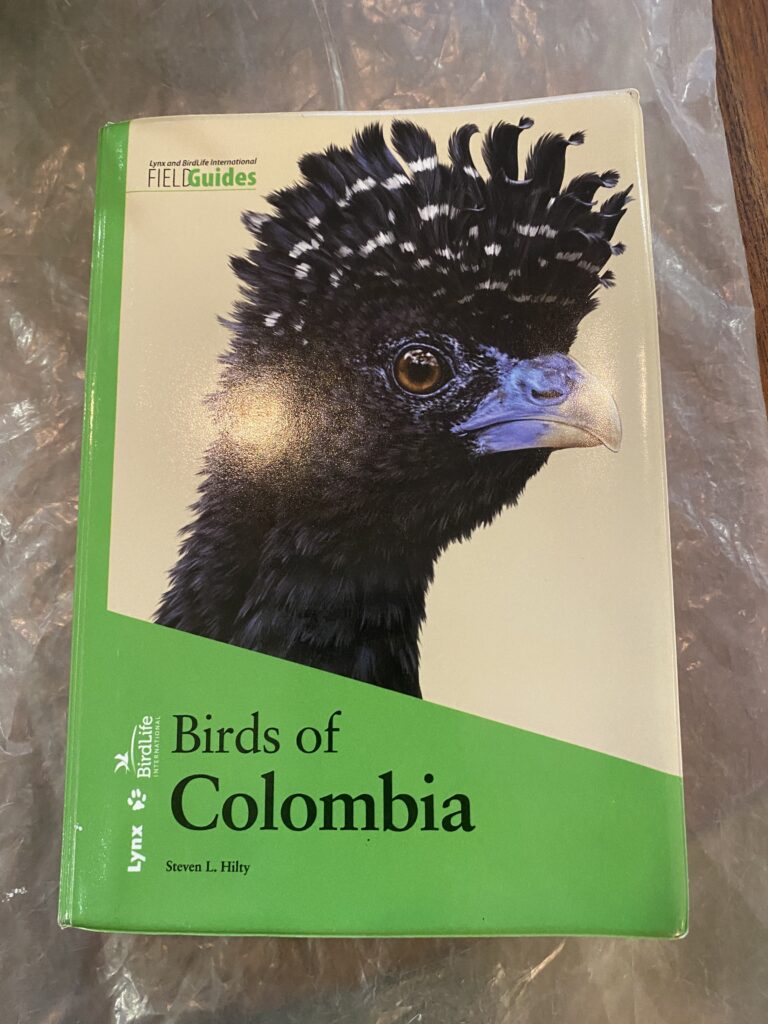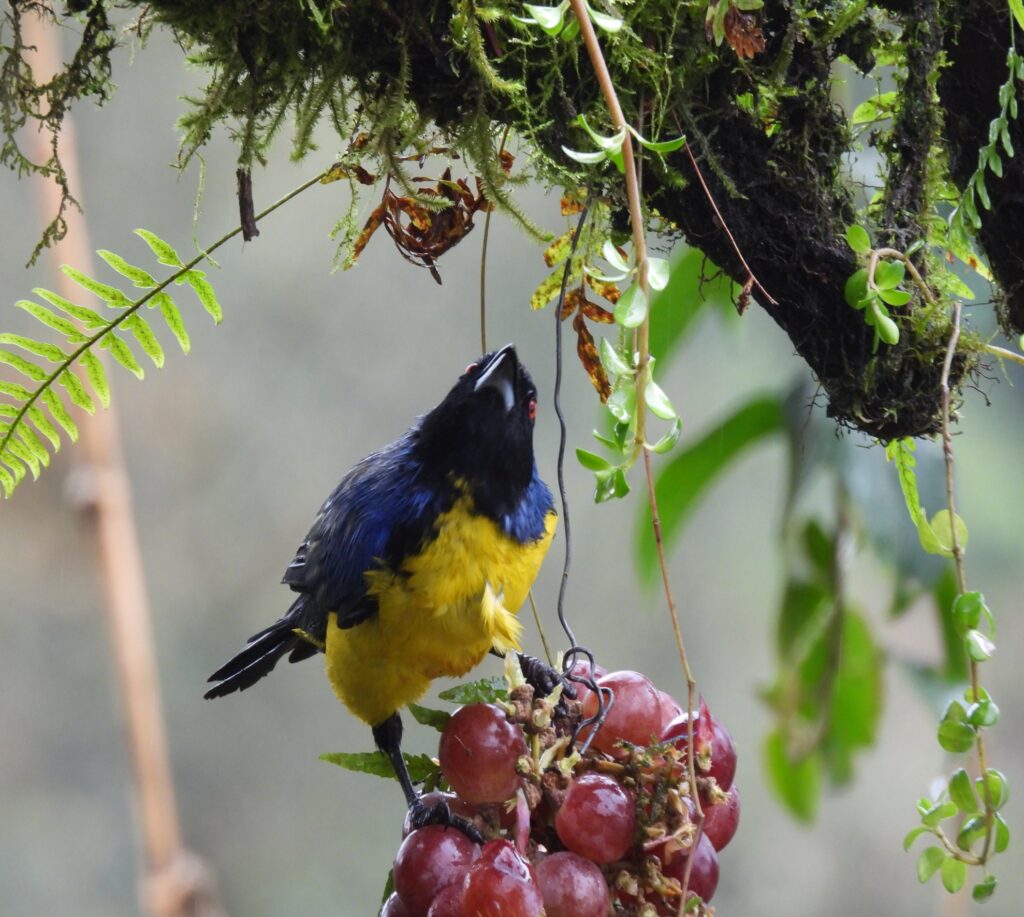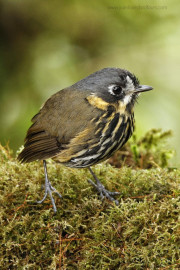Colombia Caribbean Coastal & Mountain House Lodge Santa Marta | March 2 – 8, 2026
With a One Day (March 9th) Optional Extension to Cartagena
Birding the Mountain House Lodge in Santa Marta
Colombia is a place that every bird watcher or photographer dreams about. It is, after all, the country with more birds than any other, with a whopping 2,016+ species! This is a place that every bird photographer should not leave on their bucket list. I have designed this trip to visit some of Colombia’s truly special bird hotspots. We’ll see Mountain Tanagers, Antpittas, Cock of the Rocks, and hummingbirds.
This itinerary presents an incredibly unique birdwatching expedition aimed at observing birds that are either endemic or nearly endemic to northern Colombia. This journey provides the opportunity to explore two of the nation’s most significant mountain ranges: the Perijá and Santa Marta ranges. Additionally, you’ll have the chance to venture into the dry forests of the Guajira region, where numerous exceptional bird species await discovery and photo opportunities.
Over the span of a few days, you’ll have the pleasure of encountering an approximate total of 300 bird species. This experience will undoubtedly allow you to immerse yourself in one of the most astonishing birdwatching destinations within Colombia, resulting in a remarkable increase in your birdwatching checklist.
Colombia’s Caribbean Coast boasts a warm and tropical climate, where arid zones coexist harmoniously with lush tropical dry forests. The vibrant Caribbean culture exhibits similarities to that of Central America and various other parts of the region.
Within this region, you’ll encounter two prominent indigenous groups: the Wayuu, often referred to as “the desert people,” and the Tayronas. The Santa Marta mountains are home to a wealth of over 20 endemic species, many of which can be easily spotted. The diverse habitats encompassing the Guajira peninsula’s arid terrains and the coastal aquatic ecosystems offer ample opportunities to effortlessly observe numerous bird species.
- Diversity of ecosystems: tropical dry, very dry, and humid forest, subtropical and sub-Andean forests, mangroves, and aquatic ecosystems.
- A Calm pace and easy-to-walk trails.
- The best view and accommodation in the Santa Marta Mountains.
- Rough roads make the ascent to the high elevations of the Santa Marta Mountains challenging.
- Comfortable and calm lodges near or within the areas of interest.
- Physical demand: low.
- Nature and culture interpretation by our expert guides.
- Enjoy amazing views over the Santa Marta mountains, the tallest coastal mountains in the world.
Recommendations for Travel
To ensure a comfortable and enjoyable trip, here’s a list of essential items to consider bringing. Make sure to also adhere to the travel recommendations outlined below:
- Binoculars (high-quality pair)
- Camera
- Flashlight (with rechargeable batteries)
- Insect repellent
- Sunscreen and lip balm
- Lightweight and comfortable clothing (long pants and sleeves)
- Swimsuit
- Fleece clothing
- Hat or cap
- Windproof raincoat
- Comfortable walking shoes
- Sandals
- Sunglasses
- Personal medications
- Compact umbrella (dark-colored)
- Battery-powered alarm clock
- Small backpack for short trips
- Airtight bags to protect clothing and electronics from humidity
- Rechargeable batteries
- Essential travel documents (passport, insurance, etc.)
Important:
Before traveling to Colombia, it’s advisable to consult your doctor about necessary vaccinations.
Visa:
Colombia does not require a visa for entry. A passport valid for at least 6 months beyond your return date is sufficient. (Please verify specific requirements for your country.)
Physical Activity Level:
This trip involves a moderate level of physical activity:
- Birdwatching near lodges or from vehicles.
- Birdwatching along nearby trails (within 0.5 – 1 mile).
- Pack efficiently as domestic flights allow 23 kg of checked baggage and 5 kg of carry-on. Additional costs for excess luggage will be your responsibility.
- While rubber boots aren’t essential, it’s recommended to bring extra shoes or trekking/water shoes, as muddy conditions are likely at some point.
Electricity:
American-style plugs and AC 110 volts are available at all reserves.
Recommended field guide:
Birds of Colombia, Steven Hilty -Lynx edition.
Avifauna Colombiana A field guide to the birds of Colombia, Fernando Ayerbe Quiñones, WCS
Itinerary
Please plan to arrive on March 2, 2026. Our tour will depart from Barranquilla at 6:00 AM on Tuesday, March 3, transferring guests to the Mountain House Lodge in Santa Marta. Kindly coordinate your flight arrangements with YBT.
Day 1 – March 3: Barranquilla – El Dorado reserve area
Early in the morning, we’ll take a 90-minute drive to our first stop in the outskirts of Barranquilla, where we will look for the first endemic of the region: the noisy Chestnut-winged Chachalaca. After trying a few other birds, we will head east towards the area of the Salamanca National Park. Just before the park, there is a village road where the main specialties are (NE) Northern Screamer, (E) Bronzed Cowbird, Dwarf Cuckoo, Stripe-backed Wren, (E)Turquoise-winged Parrotlet, Russet-throated Puffbird, and others. Salamanca National Park is a publicly protected area that preserves necessary extensions of mangrove ecosystems. Here we will look for the endemic Sapphire-bellied Hummingbird, Sapphire-throated Hummingbird, Bicolored Conebill, Brown-throated Parakeet, Yellow-chinned Spinetail, Golden-green Woodpecker, Pied Puffbird, and other specialties.
After visiting Salamanca, we will stop for lunch on our way to Minca. In Minca, we will transfer our luggage to 4×4 vehicles and continue ascending into the Sierra Nevada de Santa Marta. We will spend the next two nights at Mountain House Hotel. Upon arrival, we will have a couple of hours to enjoy the bird feeders and prepare for the following day’s excursion to the higher elevations of the mountains.
Day 2 – March 4; El Dorado Reserve Area
Today, we will rise very early and head up to a higher elevation, looking for the Santa Marta Endemics of this section. With the stunning views of the tallest snowy peaks of Colombia, we will look for the endemics, Santa Marta Parakeet, Santa Marta Warbler, Santa Marta Mountain-tanager, Santa Marta Bush-tyrant, Santa Marta Antpitta, Brown-rumped Tapaculo, Rusty-headed Spinetail, Yellow-crowned Whitestart, Black-backed Thornbill, Hermit Wood-wren, and the recently split of Rufous Antpitta and Sierra Nevada Antpitta. Other specialties are also found here, like the Santa Marta race of the Tyriant Metaltail, Scaly-naped Parrot, Flammulated Treehunter, Paramo Seedeater, Golden Grosbeak, Black-and-chestnut Eagle, Black-and-white Hawk-eagle, and the near-endemic White-tipped Quetzal.
The afternoon will be spent looking for missing specialties around and below the lodge.
Day 3 – March 5; Transfer and Birding Towards Minca
This morning, our journey will lead us back to the lowlands as we venture through the forest below El Dorado Lodge, in route to Minca. Along the way, we’ll concentrate on identifying the crucial missing species highlighted on day 1’s list. Our aim is to arrive in Minca by lunchtime, where we’ll continue our quest by delving into the tropical dry forest below, in pursuit of further species or those we haven’t yet encountered.
Day 4 – March 6; Birdwatching in Tayrona National Park
Today offers an enchanting opportunity to delve into the realm of flora and fauna, where vibrant displays of nature unfold. This pristine habitat is a haven for bird enthusiasts, revealing two mesmerizing species of manakins that captivate with their astonishing acrobatic courtship performances: the Lance-tailed Manakin (Chiroxiphia lanceolata) and the White-bearded Manakin (Manacus manacus).
Within this lush landscape, you’ll encounter not only these avian wonders, but also exclusive endemic creatures such as the Yellow-striped Poison Dart Frog and the critically endangered Blue-billed Curassow (Crax alberti). This park is their refuge, a place where their existence is safeguarded, and where you can witness their unique beauty. Embark on a journey to discover the geological marvels that shape this coastal paradise, as you traverse the diverse landscapes of the Colombian Caribbean. Immerse yourself in the allure of a tropical haven as you engage in birdwatching, encountering an array of species ranging from toucans and monkeys to various mammals.
Day 5 – March 7; Camarones, Guajira
Early in the morning, we’ll head to Camarones in Los Flamencos Sanctuary, a region in Colombia’s northeast called “La Guajira.” Here, unique bird species thrive, exclusive to the Colombia-Venezuela area. We’ll explore dry scrub forest trails for specialties like White-whiskered Spinetail, Orinocan Saltator, Slender-billed Inezia, Chestnut Piculet, Red-billed Emerald, and Tocuyo Sparrow, all endemic to this locale. In the parched tropical forest, we’ll seek other standouts, including the culturally significant near-endemic Vermilion Cardinal. Notable species like Bare-eyed Pigeon, Blue-crowned Parakeet, Green-rumped Parrotlet, Buffy Hummingbird, Black-crested Antshrike, Northern Scrub-flycatcher, Pale-eyed Pygmy Tyrant, Pearly-vented Tody Tyrant, Glaucous Tanager, Double-striped Thick-knee, White-fringed Antwren, Rufous-vented Chachalaca, Pileated Finch, Reddish Egret, Scarlet Ibis, White-tipped Inezia, Pale-legged Hornero, and the charismatic American Flamingo also inhabit the area. *This site is vital for North American migratory birds, offering a key rest stop en route to other South American wintering grounds or their northern return.
Day 6 – March 8; Flamingos NNP and Transfer to Barranquilla.
This morning marks the conclusion of our birding journey in Colombia. We will spend our final outing exploring the same sector of Flamingos National Natural Park, giving us an opportunity to look for any species we may still be missing and to visit additional habitats where some of the region’s special bird species can be found.
After lunch at midday, we will begin our drive back to Barranquilla, where our trip began. The journey will take approximately 4.5 hours. We will spend our final night of the tour in Barranquilla.
Participants may choose to schedule their return flights either later this evening or the following day, depending on their preferences and travel plans.
Day 7 – March 9: Tour ends here, our marvelous journey, all of us return home with our hard drives full of photos and memories from our Colombia Birding Caribbean experience. The tour concludes with a departure to Barranquilla Airport.
Keywords: (E) = endemic, (NE) = near endemic
Please get in touch with us to request a registration form and pricing.
Trip Details
Start date:
March 2, 2026
End date:
March 8, 2026
Destination:
The Caribbean Coast of Santa Marta in Colombia








